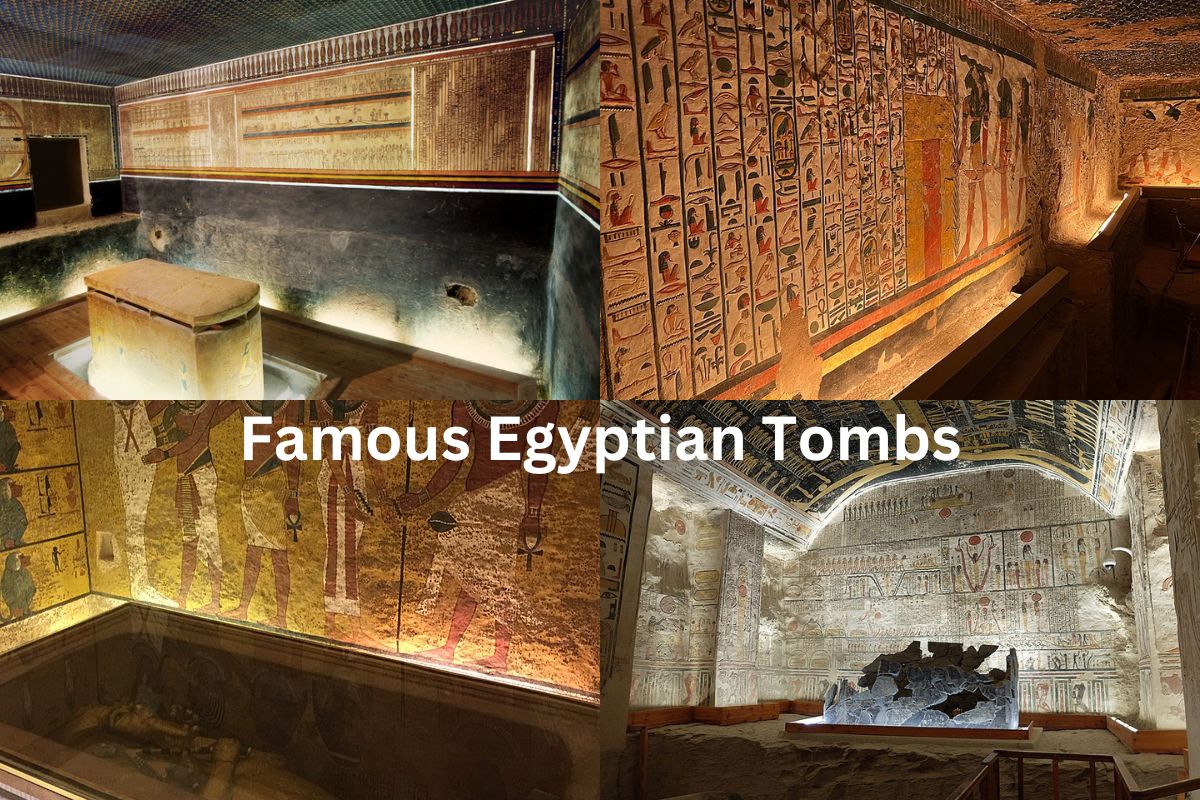Egypt’s tombs are famous for their exquisite carvings, vibrant murals, and one-of-a-kind architecture. Many of these tombs were constructed during the Old Kingdom period to contain the relics of great pharaohs and their families.
These tombs were not only places of burial, but also afterlife sanctuaries, housing offerings and treasures thought to aid the deceased on their passage to the afterlife.
Studying these ancient tombs provide a wonderful look into the fascinating world of the pharaohs of Ancient Egypt.
From Tutankhamun’s well-known tomb to the lesser-known but equally stunning tombs of Nefertari and Akhenaten, each tomb is a tribute to the ancient Egyptians’ talent and inventiveness.
Many of these tombs have been unearthed and maintained, providing tourists with a once-in-a-lifetime opportunity to see the wonders of ancient Egypt.
From the famous pyramids to the complex tombs in the Valley of the Kings and the Valley of the Queens, each tomb bears witness to this intriguing civilization’s rich history and culture.
Famous Egyptian Tombs
1. Tutankhamun’s Tomb
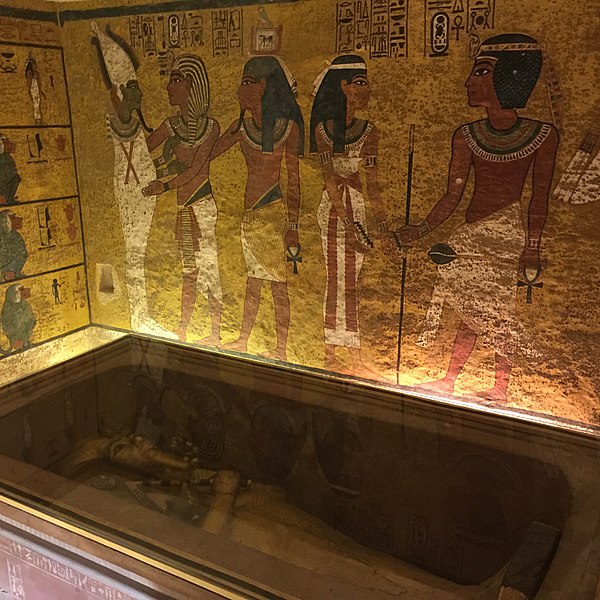
Tutankhamun’s Tomb, commonly known as King Tut’s Tomb, is the most famous Egyptian tomb ever discovered. The tomb was found in 1922 by British archaeologist Howard Carter in the Valley of the Kings on the Nile’s west bank near Luxor, Egypt.
Also Read: Famous Archaeologists
Tutankhamun was a pharaoh who ruled Egypt from roughly 1332 to 1323 BC, during the 18th dynasty. He is remembered for his youthful age at the time of his accession, as well as his sumptuous burial, which contained a trove of treasures and relics unearthed in the grave.
Also Read: Tutankhamun Facts
The Tomb of Tutankhamun is divided into four rooms, one of which houses the pharaoh’s sarcophagus. The tomb was modest in comparison to other tombs in the Valley of the Kings, prompting some researchers to speculate that it was a hastily built tomb, possibly due to Tutankhamun’s unexpected death at a young age.
The tomb was filled with jewels, including Tutankhamun’s renowned golden death mask, which has become one of ancient Egypt’s most recognizable relics.
Also Read: Famous Egyptian Temples
Other valuables at the tomb included gold, furniture, and chariots, as well as a multitude of lesser objects like amulets and shabtis, which were thought to accompany the pharaoh in the afterlife.
The discovery of Tutankhamun’s Tomb was a watershed moment in archaeological history, providing a rare view into the life and times of an ancient pharaoh.
Today, the tomb is one of Egypt’s most renowned tourist destinations, drawing millions of visitors each year to marvel at the treasures of this ancient civilization.
2. Tomb of Ramses VI
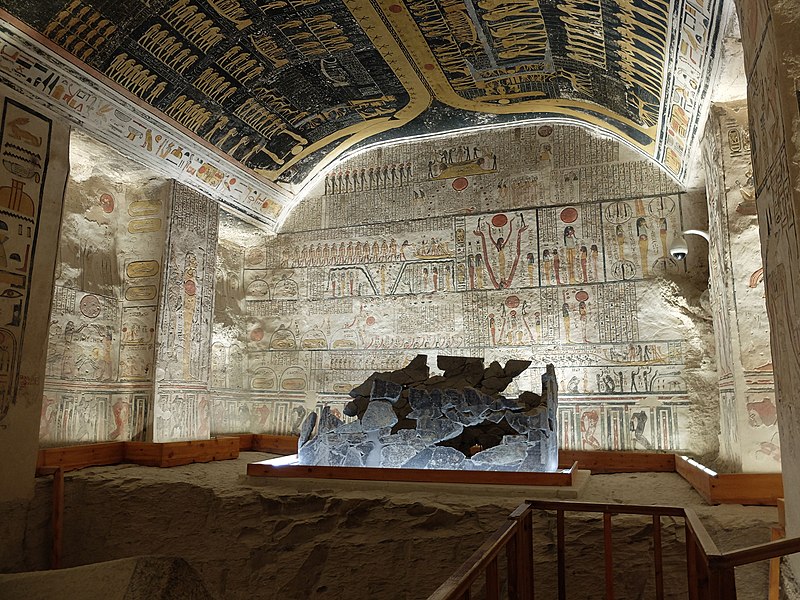
The Ramses VI Tomb is located in the Valley of the Kings on the Nile’s west bank near Luxor. It is one of the Valley of the Kings’ largest tombs, and it is famous for its well-preserved wall paintings and scenarios showing the pharaoh’s journey to the afterlife.
Also Read: Facts About the Valley of the Kings
The tomb was built for Ramses VI, the 20th Dynasty ruler of Egypt. It comprises of a lengthy corridor that leads to numerous chambers, including the burial chamber, which houses Ramses VI’s sarcophagus. The tomb’s walls and ceilings are adorned with complex paintings and hieroglyphs depicting scenes from the Book of the Dead.
Also Read: Egyptian Mummy Facts
The tomb paintings are famous for their vibrant colors and realistic portrayals of the pharaoh as well as other gods and goddesses. The tomb also depicts the pharaoh giving offerings to the gods and going through the numerous trials and tests required to enter the afterlife.
The “Book of Gates,” a series of scenes showing the pharaoh’s journey into the underworld, is one of the tomb’s most famous scenes. The sceneries are separated into twelve portions, each of which represents a different time of night.
Despite being one of the Valley of the Kings’ largest tombs, the Tomb of Ramses VI is relatively unknown in comparison to some of the other tombs in the area. Its well-preserved wall murals and elaborate portrayals of the pharaoh and the afterlife, however, make it a must-see for Luxor visitors.
3. Tomb of Nefertari
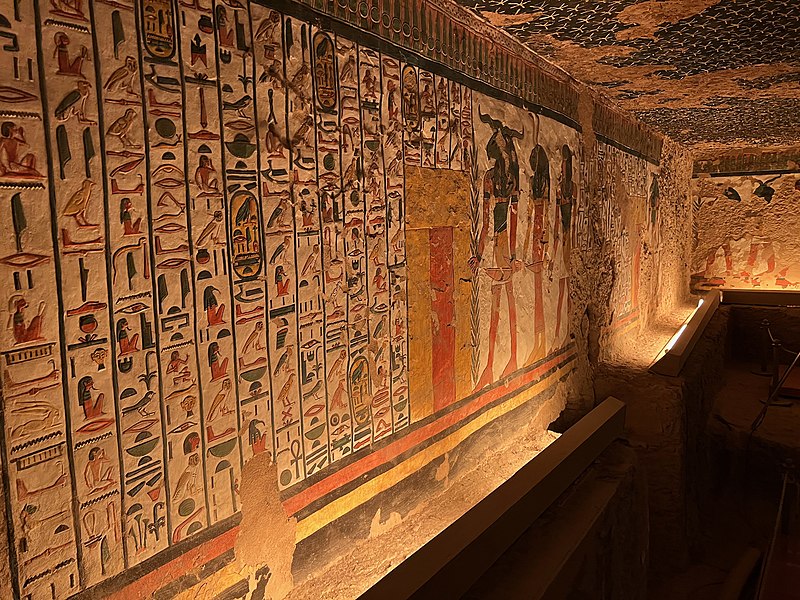
The Tomb of Nefertari is one of Egypt’s most stunning and well-preserved tombs. Nefertari was the cherished wife of Ramses II, one of Egypt’s most powerful pharaohs. The tomb is located in the Valley of the Queens, near Luxor on the west side of the Nile.
Also Read: Famous Egyptian Queens
The tomb was discovered in 1904 by Italian archaeologist Ernesto Schiaparelli, who discovered it in disrepair. The tomb reopened to the public in 1995, after years of repair. The tomb’s lovely decorations, which include detailed wall murals and colorful scenes, make it one of Egypt’s most famous tourist attractions.
The burial room, the antechamber, the side chamber, and the treasury are among the chambers in the tomb. The tomb’s walls and ceilings are filled with stunning images of Nefertari, as well as scenes from the Book of the Dead, which was a compilation of spells and prayers said to aid the dying in the afterlife.
The colors employed in the tomb are vibrant, with blues, yellows, greens, and reds dominating. The hieroglyphs are likewise exceptionally well preserved and demonstrate a high level of artistry. The tomb of Nefertari is a masterwork of ancient Egyptian art and construction, as well as a tribute to the ancient Egyptians’ talent and imagination.
4. Tomb of Seti I
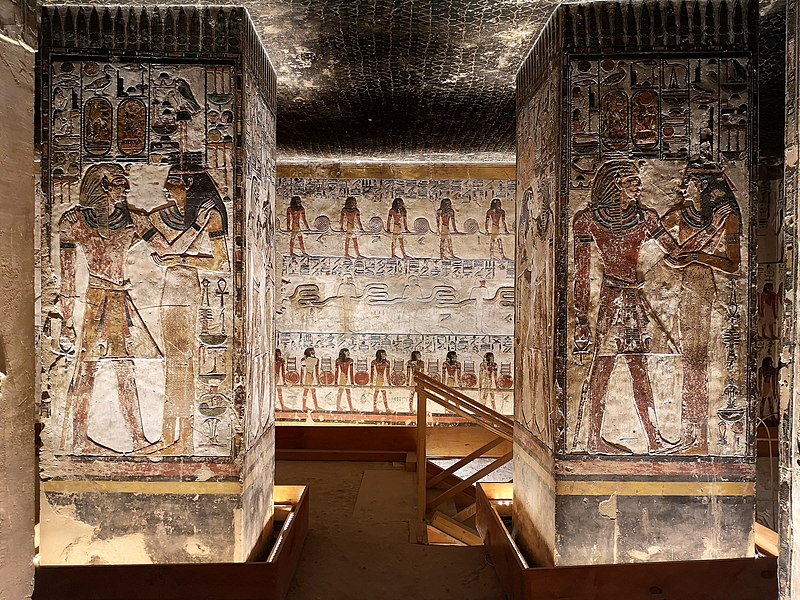
The Tomb of Seti I is one of the most spectacular tombs in Luxor’s Valley of the Kings. It was built for Seti I, Ramses II’s father, who ruled Egypt during the 19th dynasty from 1290 to 1279 BC.
With ten chambers, the Tomb of Seti I is one of the Valley of the Kings’ longest and deepest tombs. The tomb is famous for its ornate carvings and paintings depicting themes from Egyptian mythology and the pharaoh’s trip to the afterlife.
The Hall of Beauty, a vast room covered with carvings of female figures from many areas of the ancient world, including Greece, Syria, and Nubia, is one of the most prominent elements of Seti I’s Tomb. The carvings are extremely intricate and provide an intriguing glimpse into the cultural interaction that happened during Seti’s reign.
The tomb also has a number of other spectacular chambers, notably the Burial Chamber, which houses Seti I’s sarcophagus. The tomb’s walls and ceilings are decorated in vibrant paintings and hieroglyphs depicting the pharaoh’s journey to the afterlife, as well as numerous gods and goddesses.
Despite its spectacular ornamentation, the Tomb of Seti I was never finished, and several of the chambers remain unfinished today. However, it is one of the most spectacular tombs in the Valley of the Kings and a tribute to the ancient Egyptians’ talent and imagination.
5. Tomb of Hatshepsut
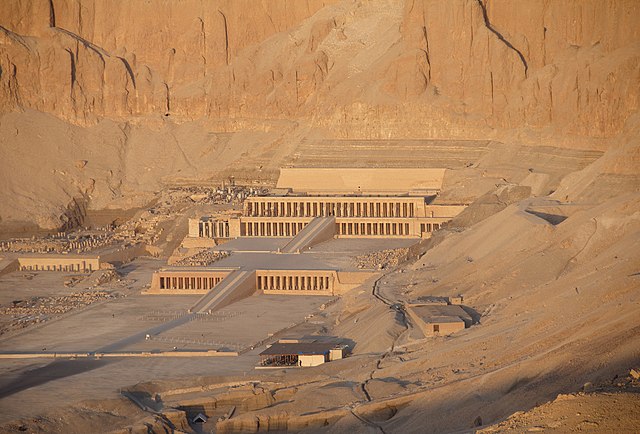
The Tomb of Hatshepsut is one of Egypt’s most remarkable tombs, located in the Valley of the Kings on the Nile’s west bank near Luxor. Hatshepsut was a great pharaoh who governed Egypt from roughly 1479 to 1458 BC during the 18th dynasty.
The Tomb of Hatshepsut is notable for its distinctive construction, which includes a sequence of terraces and ramps leading up to the tomb’s entrance. The tomb is especially famous for its ornate decorations, which include elaborate carvings and paintings depicting episodes from Hatshepsut’s life and reign.
The Red Chapel, a modest chapel built during Hatshepsut’s reign, is one of the most prominent elements of the Tomb of Hatshepsut. Carvings and paintings depicting the pharaoh giving offerings to the gods adorn the shrine.
The tomb also has a number of other remarkable chambers, including the Burial Chamber, which houses Hatshepsut’s sarcophagus. The tomb’s walls and ceilings are decorated in vibrant paintings and hieroglyphs depicting the pharaoh’s journey to the afterlife, as well as numerous Egyptian gods and goddesses.
Despite its spectacular decorations, Hatshepsut’s Tomb was partly demolished by her successor, Thutmose III, who sought to obliterate her memory from history. Much of the tomb, however, has been renovated and is now visible to visitors, providing a rare view into the lives and times of one of Egypt’s most powerful pharaohs.
6. Tomb of Amenhotep II
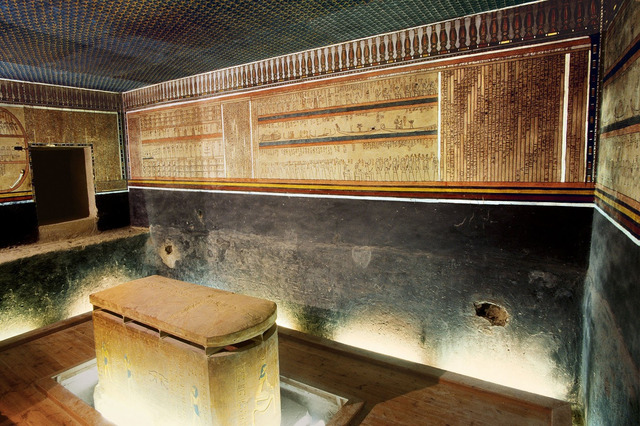
The Tomb of Amenhotep II is located in the Valley of the Kings, near Luxor, Egypt, on the west bank of the Nile. Amenhotep II governed Egypt during the 18th dynasty, from around 1427 to 1400 BC.
The Tomb of Amenhotep II is one of the Valley of the Kings’ largest and most magnificent tombs. The tomb is divided into halls and chambers that are ornamented with carvings and paintings showing scenes from the pharaoh’s life and reign.
The Burial Chamber, which houses Amenhotep II’s sarcophagus, is one of the tomb’s most remarkable elements. The chamber is ornately carved and painted, depicting the pharaoh’s voyage to the afterlife as well as numerous gods and goddesses.
The Antechamber, which houses a number of lesser artifacts such as shabtis, amulets, and funerary furniture, is one of the tomb’s other noteworthy chambers. The tomb’s walls and ceilings are filled with vibrant murals and hieroglyphs that provide intriguing insight into ancient Egypt’s religious beliefs and customs.
Although being one of the Valley of the Kings’ greatest tombs, the Tomb of Amenhotep II is relatively unknown in comparison to other tombs in the vicinity. Yet, its stunning decorations and distinctive construction make it a must-see for visitors to Luxor who are interested in ancient Egyptian history and culture.
7. Tomb of Thutmose III

Thutmose III’s tomb is located in the Valley of the Kings on the Nile’s west bank near Luxor, Egypt. Thutmose III was a pharaoh who ruled Egypt from 1479 to 1425 BC, during the 18th dynasty.
The Tomb of Thutmose III is one of the Valley of the Kings’ best-preserved tombs. The tomb is divided into halls and chambers that are ornamented with carvings and paintings showing scenes from the pharaoh’s life and reign.
The Burial Chamber, which houses Thutmose III’s sarcophagus, is one of the tomb’s most remarkable elements. The chamber is ornately carved and painted, depicting the pharaoh’s voyage to the afterlife as well as numerous gods and goddesses.
The tomb also has several additional spectacular chambers, such as the Antechamber, which houses a number of lesser treasures including shabtis and amulets. The tomb’s walls and ceilings are filled with vibrant murals and hieroglyphs that provide intriguing insight into ancient Egypt’s religious beliefs and customs.
The architecture of Thutmose III’s tomb is famous for its distinctive design, which includes a sequence of sloping ramps and steps that lead down into the tomb. The architecture of the temple complexes built under Thutmose III’s reign is said to have inspired this style.
While being one of the Valley of the Kings’ lesser-known tombs, the Tomb of Thutmose III is a fascinating tribute to the ancient Egyptians’ ability and inventiveness, and a must-see for tourists to Luxor interested in ancient Egypt’s history and culture.
8. Tomb of Senenmut
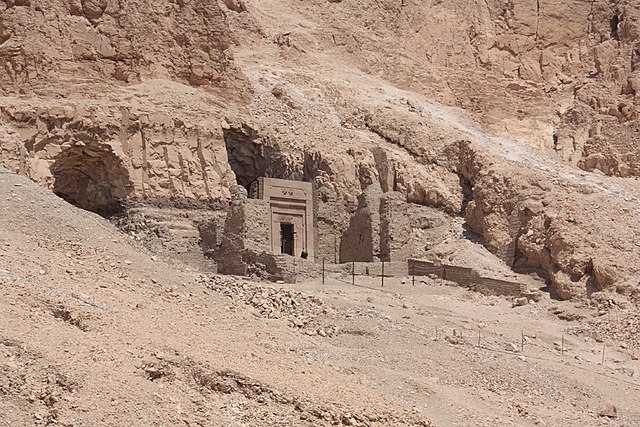
Senenmut’s Tomb is found in the Theban Necropolis on the Nile’s west bank near Luxor, Egypt. Senenmut was a powerful court officer who served under Queen Hatshepsut from roughly 1473 to 1458 BC during the 18th dynasty.
The Tomb of Senenmut is famous for its one-of-a-kind architecture, which includes a labyrinth of halls and rooms carved into the limestone cliffs. The tomb is especially notable for its ornate decorations, which include elaborate carvings and paintings depicting moments from Senenmut’s life and work.
The Burial Chamber, which houses Senenmut’s sarcophagus, is one of the tomb’s most spectacular features. The chamber is ornately carved and painted, depicting the pharaoh’s voyage to the afterlife as well as numerous gods and goddesses.
The tomb also has a number of other spectacular chambers, such as the Antechamber, which houses a variety of lesser treasures including shabtis and amulets. The tomb’s walls and ceilings are filled with vibrant murals and hieroglyphs that provide intriguing insight into ancient Egypt’s religious beliefs and customs.
While being one of the lesser-known tombs in the Theban Necropolis, the Tomb of Senenmut is a tribute to the ancient Egyptians’ ability and inventiveness, and a must-see for tourists to Luxor interested in Egyptian history and culture.
9. Tomb of Merneptah
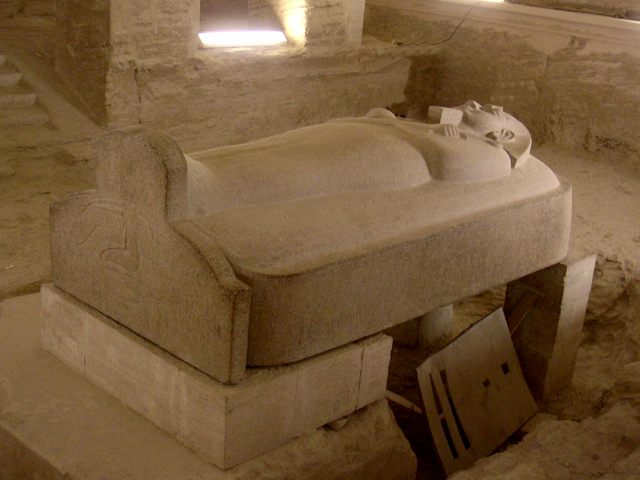
The Tomb of Merneptah is located in Egypt’s Valley of the Kings on the Nile’s west bank near Luxor. Merneptah was a pharaoh who ruled Egypt from roughly 1213 to 1203 BC, during the 19th dynasty.
The Tomb of Merneptah is one of the Valley of the Kings’ best-preserved tombs. The tomb is divided into halls and chambers that are ornamented with carvings and paintings showing scenes from the pharaoh’s life and reign.
The Burial Chamber, which houses Merneptah’s sarcophagus, is one of the tomb’s most remarkable elements. The chamber is ornately carved and painted, depicting the pharaoh’s voyage to the afterlife as well as numerous gods and goddesses.
The tomb also has several additional spectacular chambers, such as the Antechamber, which houses a number of lesser treasures including shabtis and amulets. The tomb’s walls and ceilings are filled with vibrant murals and hieroglyphs that provide intriguing insight into ancient Egypt’s religious beliefs and customs.
Merneptah’s Tomb is remarkable for its distinctive architecture, which includes a number of staircases and ramps leading down into the tomb. The architecture of the temples built under Merneptah’s reign is said to have inspired this style.
While being one of the Valley of the Kings’ lesser-known tombs, the Tomb of Merneptah is a fascinating tribute to the ancient Egyptians’ ability and inventiveness, and a must-see for tourists to Luxor interested in ancient Egypt’s history and culture.
10. Tomb of Horemheb
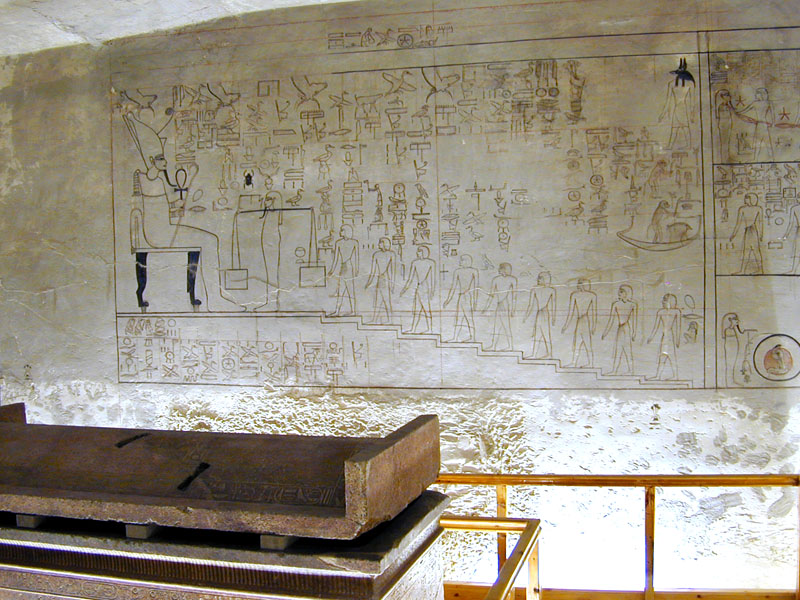
The Tomb of Horemheb is located in the Valley of the Kings, near Luxor, Egypt, on the west bank of the Nile. Horemheb was a pharaoh who ruled Egypt from roughly 1319 to 1292 BC, during the 18th dynasty.
The Tomb of Horemheb is one of the Valley of the Kings’ lesser tombs, yet it is renowned for its distinctive design and spectacular embellishments. The tomb is divided into halls and chambers that are embellished with sculptures and paintings showing scenes from Horemheb’s life and reign.
The Burial Chamber, which houses Horemheb’s sarcophagus, is one of the tomb’s most spectacular elements. The chamber is ornately carved and painted, depicting the pharaoh’s voyage to the afterlife as well as numerous gods and goddesses.
The tomb also has several additional spectacular chambers, such as the Antechamber, which houses a number of lesser treasures including shabtis and amulets. The tomb’s walls and ceilings are filled with vibrant murals and hieroglyphs that provide intriguing insight into ancient Egypt’s religious beliefs and customs.
The Tomb of Horemheb is renowned for its distinctive architecture, which includes a series of sloping ramps leading down into the tomb. The architecture of the temple complexes built under Horemheb’s reign is said to have inspired this style.
While being one of the Valley of the Kings’ lesser-known tombs, the Tomb of Horemheb is a fascinating tribute to the ancient Egyptians’ ability and inventiveness, and a must-see for tourists to Luxor interested in ancient Egypt’s history and culture.
11. Tomb of Khufu
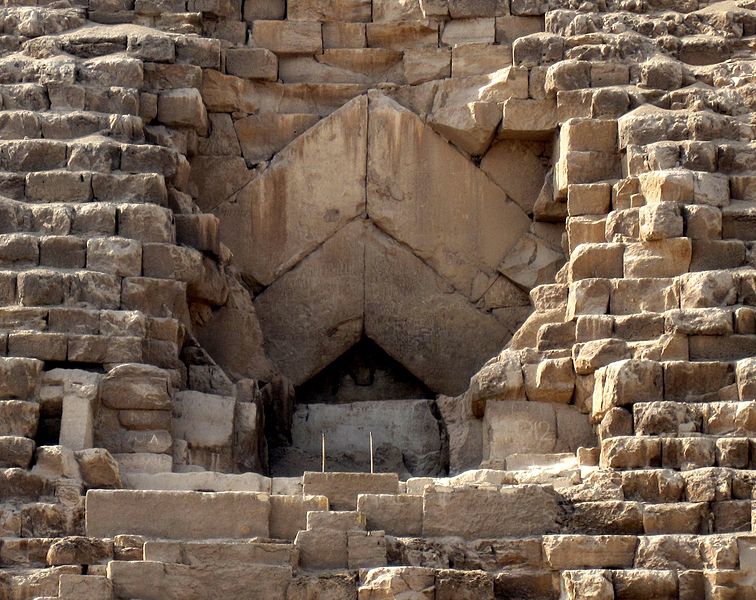
The Tomb of Khufu, popularly known as the Great Pyramid of Giza, is one of Egypt’s most recognizable and spectacular structures. Khufu, commonly known as Cheops, was a pharaoh who governed Egypt from roughly 2589 to 2566 BC during the 4th dynasty.
Also Read: khufu Facts
The Great Pyramid of Giza, one of the Seven Wonders of the Ancient World, is the largest and oldest of the three pyramids in the Giza complex. The pyramid is composed of limestone blocks and was once covered with white limestone casing stones, which were later removed.
The pyramid’s interior comprises a number of hallways and chambers designed to house the pharaoh’s remains and valuables. The King’s Chamber, constructed of red granite and housing Khufu’s sarcophagus, is the most spectacular chamber. Intricate sculptures and paintings adorn the walls and ceiling of the chamber.
Also Read: Accomplishments of Khufu
The Great Pyramid of Giza is famous for its size and perfection, with each stone block cut and positioned with great precision. The pyramid is thought to be made up of about 2.3 million stone blocks, each weighing between 2 and 80 tons.
Although being one of Egypt’s oldest and most well-known tombs, the Great Pyramid of Giza remains steeped in mystery and intrigue, with many questions concerning its construction and function remaining unresolved. However, it is one of the world’s most impressive and awe-inspiring ancient buildings, and a must-see for tourists to Egypt.
12. Tomb of Khafre
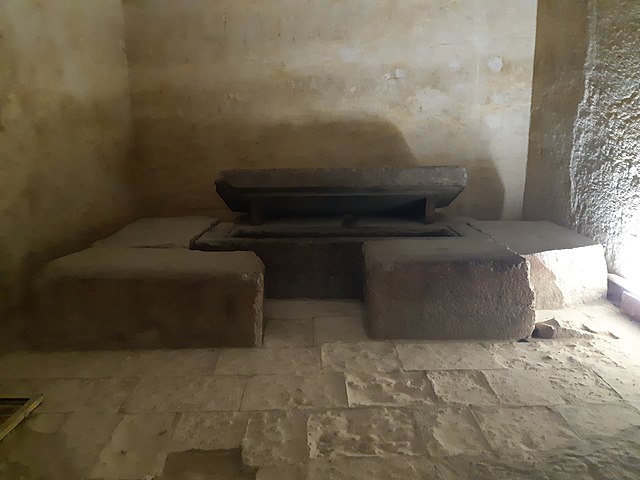
The Tomb of Khafre, also known as the Pyramid of Khafre, is the second-largest pyramid in the area after the Great Pyramid of Khufu and is located in Giza, Egypt. It was constructed during the Old Kingdom period, in 2520 BC, for Pharaoh Khafre, the son of Khufu.
The pyramid is composed of limestone blocks and stands 143 meters (471 feet) tall. It is a square-based pyramid with four sides that each measure 215 meters (705 feet) in length, similar to the Great Pyramid. The tomb’s entrance is positioned on the pyramid’s north face and leads to a descending staircase that leads to the burial chamber.
The Tomb of Khafre’s burial chamber is composed of red granite and is positioned in the pyramid’s center. The chamber has a sarcophagus, which was empty when the tomb was discovered since it was thought that the pharaoh’s mummy had been relocated.
The interior of the Tomb of Khafre is wonderfully preserved, with magnificent carvings and embellishments. Hieroglyphs and scenes depicting the pharaoh’s trip to the afterlife decorate the walls of the burial chamber. The pyramid also has a number of smaller chambers and corridors, some of which were used to store funerary items.
The Tomb of Khafre is a monument to the ancient Egyptians’ technical and architectural brilliance, as they were able to build such large constructions with only basic equipment and labour. It is still one of Egypt’s most popular tourist attractions, attracting millions of visitors each year.
13. Tomb of Akhenaten
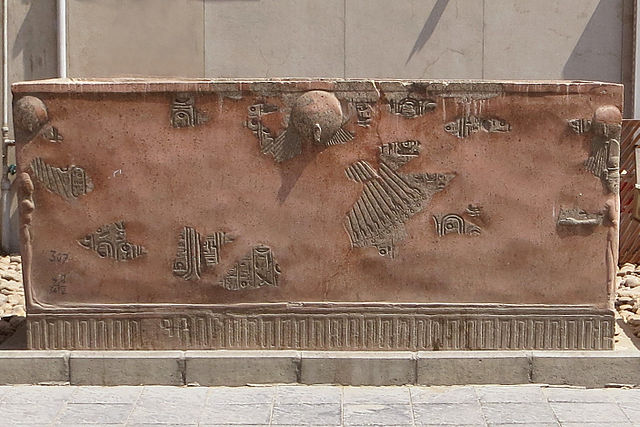
The Tomb of Akhenaten is located on the west bank of the Nile, near modern-day Luxor, Egypt, in the Theban Necropolis. Akhenaten was a pharaoh of the 18th dynasty most remembered for his attempts to change Egypt’s ancient religion during his reign, which lasted from 1353 to 1336 BC.
Also Read: Akhenaten Facts
The Tomb of Akhenaten is one of Egypt’s most unusual tombs, as it is thought to have been built in a different style than other tombs from the same period. American archaeologist Theodore Davis discovered the tomb in 1907, although it was not fully excavated until the 1920s by a team led by British archaeologist Arthur Weigall.
The tomb is made up of a succession of passageways and chambers covered with sculptures and paintings of Akhenaten and his family. Unlike other Egyptian tombs, which often depicted the pharaoh’s trip to the afterlife, the Tomb of Akhenaten depicts scenes of ordinary life, including portrayals of the royal family and their domestic activities.
The tomb paintings are notable for their distinct style, which shows elongated figures with exaggerated features. The tomb’s hues are particularly striking, with brilliant pinks, blues, and yellows dominating.
One of the most fascinating aspects of Akhenaten’s Tomb is a series of engravings showing the pharaoh’s family, including his wife Nefertiti and their six daughters. The carvings depict the royal family in a lifelike style, with Akhenaten and Nefertiti in close poses and their daughters interacting with dogs and toys.
Today, the Tomb of Akhenaten remains one of the most fascinating and enigmatic tombs in Egypt, affording a look into the life and times of one of the most controversial pharaohs in Egyptian history.
